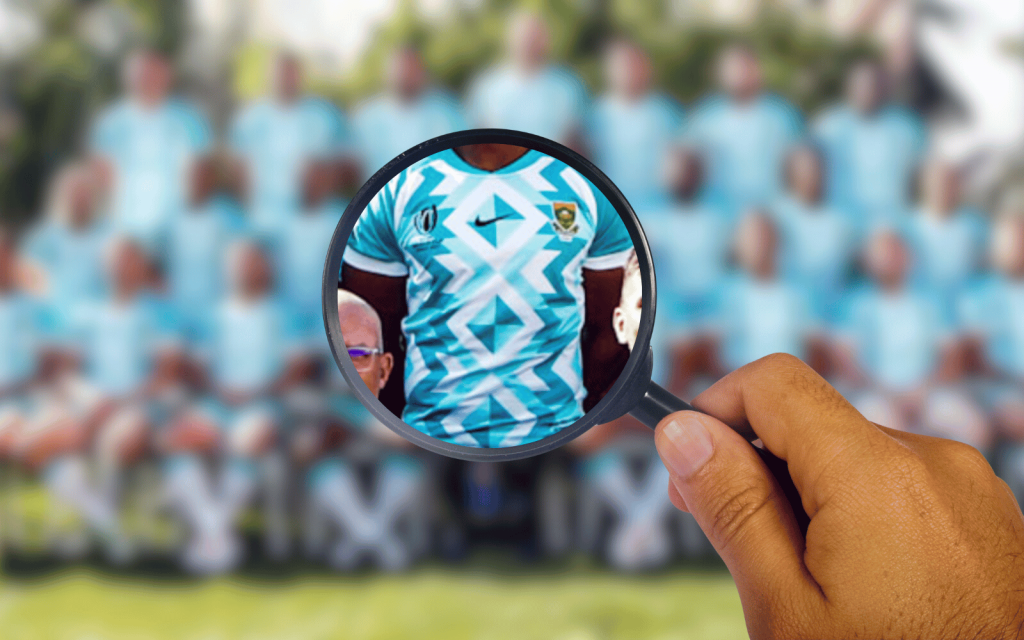If there was an award for guerrilla marketing, this year it would be won hands down by Checkers Sixty60.
As South Africans tried to come to terms with seeing the green and gold Springboks running out in “hyper jade” kit, the internet has been awash with conspiracy theories about whose fault it is.
This admittedly short-lived whodunnit took over the internet with some hilarious results – and lots of memes.
It’s the second time this year that Sixty60 has been gifted such exposure. The first time was when Twitter owner Elon Musk rebranded the company as X – which looked remarkably like the version of the letter used by Checker’s Xtra Savings loyalty programme.
Building on from this Musk-sponsored Checkers marketing campaign, Sixty60 released a very clever advert – which you have to watch for yourself:
Okay South Africa, here it finally is… The new Springbok kit 🇿🇦 and Sixty60 explained…. #springboks #RWC2023 @GlenBidermanPam @SiyaKolisi pic.twitter.com/qaZjfGHDQI
— Neil Schreuder (@Neil_Schreuder) September 14, 2023
Of course, just as many people thought the Springboks appeared to be “wearing a kit that bears a terrible resemblance to mouthwash,“ as my friend Tim Cohen put it for the Daily Maverick.
The colour was “pioneered” by Orlando Pirates on its kit, he points out and has been used by its supporters around the country to paint their homes.
Conspiracy theorists have been quick to point out that the colour is similar to one of the Springboks’ main sponsors, FNB. I may not work in fashion or interior decorating, but that is a very different shade of blue.
“Now for a devious twist,” argues Tim. “Nike is the apparel sponsor and Nike has released takkies over the past few years which feature — yes! — Hyper Jade. I, for one, would like to know how much influence they had over the choice of colour. I suspect something nefarious. Just saying.”
Sixty60’s got nothing to do with this
The real culprit is, however, the regulations that required such weird outfits in the first place. Who is that?
The short answer: World Rugby.
In an overzealous attempt to be “more inclusive” the governing body has mandated that all teams have a reverse kit that can’t be mistaken.
“It would mean that the Springboks and All Blacks would never meet again with both in their primary colours at any World Rugby event,” SA Rugby chief executive Rian Oberholzer told Daily Maverick.
“The guidelines say that: ‘If only one person watching on the sidelines of the school field is having trouble following some elements of the game due to an avoidable kit clash, then rugby is letting them down’,” he said, before addressing the issue like, well, Duane Vermeulen running into a ruck.
“But we believe that some or all of the 11 out of 12 males and 199 out of 200 women who are not colour-blind (on the statistical base presented) may also feel let down if the time-honoured traditions of the game are lost, setting aside the potential damage to the equity established in those colours and brands over centuries.”
Read More: How to watch the Rugby World Cup for free – and during load shedding
It’s hard not to disagree. Nobody wants to make the life of the disadvantaged any worse – as Tim Cohen, rightly points out (and could be true of me too): “The problem with the kit is not, in my humble view, the desire to take account of the physical shortcomings of the visually impaired — I have enough shortcomings myself to be strongly in favour of advantaging the impaired,” Tim wrote.
“It’s just that colour blindness is not ‘blindness’ in any sense; this is a popular myth. Of all the handicaps out there, colour-‘blind’ people are arguably the least ‘disadvantaged’.
He adds: “Red-green colour-‘blindness’ — the most common kind — affects about 9% of male Caucasians and about 4% of Africans, but the degree varies widely. It’s caused by a defect in the X chromosome. Since women have two X chromosomes, one typically makes up for the other, so very few women are colour-blind. Men only have a single X chromosome, so if it’s defective, they are stuffed. It is hereditary and it varies in intensity. It shows up on those circular cards with blobs that your eye doctor might show you, asking you to identify letters or numbers.”
World Rugby, like all organisations run by committee, has thrown the baby out with the bathwater in trying to solve a problem that wasn’t really a problem – and was not faced by “11 out of 12 males and 199 out of 200 women who are not colour-blind” as Oberholzer notes.
I much preferred the conspiracy theories…




